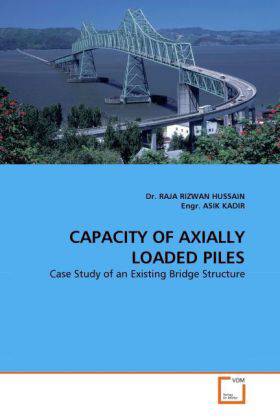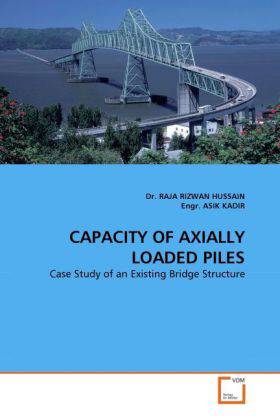
Je cadeautjes zeker op tijd in huis hebben voor de feestdagen? Kom langs in onze winkels en vind het perfecte geschenk!
- Afhalen na 1 uur in een winkel met voorraad
- Gratis thuislevering in België vanaf € 30
- Ruim aanbod met 7 miljoen producten
Je cadeautjes zeker op tijd in huis hebben voor de feestdagen? Kom langs in onze winkels en vind het perfecte geschenk!
- Afhalen na 1 uur in een winkel met voorraad
- Gratis thuislevering in België vanaf € 30
- Ruim aanbod met 7 miljoen producten
Zoeken
CAPACITY OF AXIALLY LOADED PILES
Case Study of an Existing Bridge Structure
Raja R. Hussain, Asik Kadir
Paperback | Engels
€ 67,45
+ 134 punten
Omschrijving
Axial load carrying capacity bored pile of a typical bridge is calculated. Different methods namely Meyerhof's, Vesic, Janbu's and AASHTO methods are used in this regard. A general purpose finite element program (STAAD Pro. software) has been used for the calculation of pier load resulting from wheel load and lane load. HS 20-44 truck loads are considered here as designed live load. The total vertical load is calculated by summing the dead load, wheel load and lane load. The soil test report prepared by Dhaka Water Development Board is used to determine the various parameters needed for calculating pile capacity. The variables considered for calculating the capacity of axially loaded pile are critical depth, loosening effect of soil, the position of ground water table and also the scour depth. Here factor of safety 4 has been used for Meyerhof's, 3 for Vesic and Janbu's method and 4 for AASHTO method. After obtaining the capacity of axially loaded pile by these methods, the adequacy of that pile has been checked by comparing with the total vertical load transmitted to the pile.
Specificaties
Betrokkenen
- Auteur(s):
- Uitgeverij:
Inhoud
- Aantal bladzijden:
- 88
- Taal:
- Engels
Eigenschappen
- Productcode (EAN):
- 9783639301021
- Verschijningsdatum:
- 6/10/2010
- Uitvoering:
- Paperback
- Afmetingen:
- 152 mm x 229 mm
- Gewicht:
- 141 g

Alleen bij Standaard Boekhandel
+ 134 punten op je klantenkaart van Standaard Boekhandel
Beoordelingen
We publiceren alleen reviews die voldoen aan de voorwaarden voor reviews. Bekijk onze voorwaarden voor reviews.









